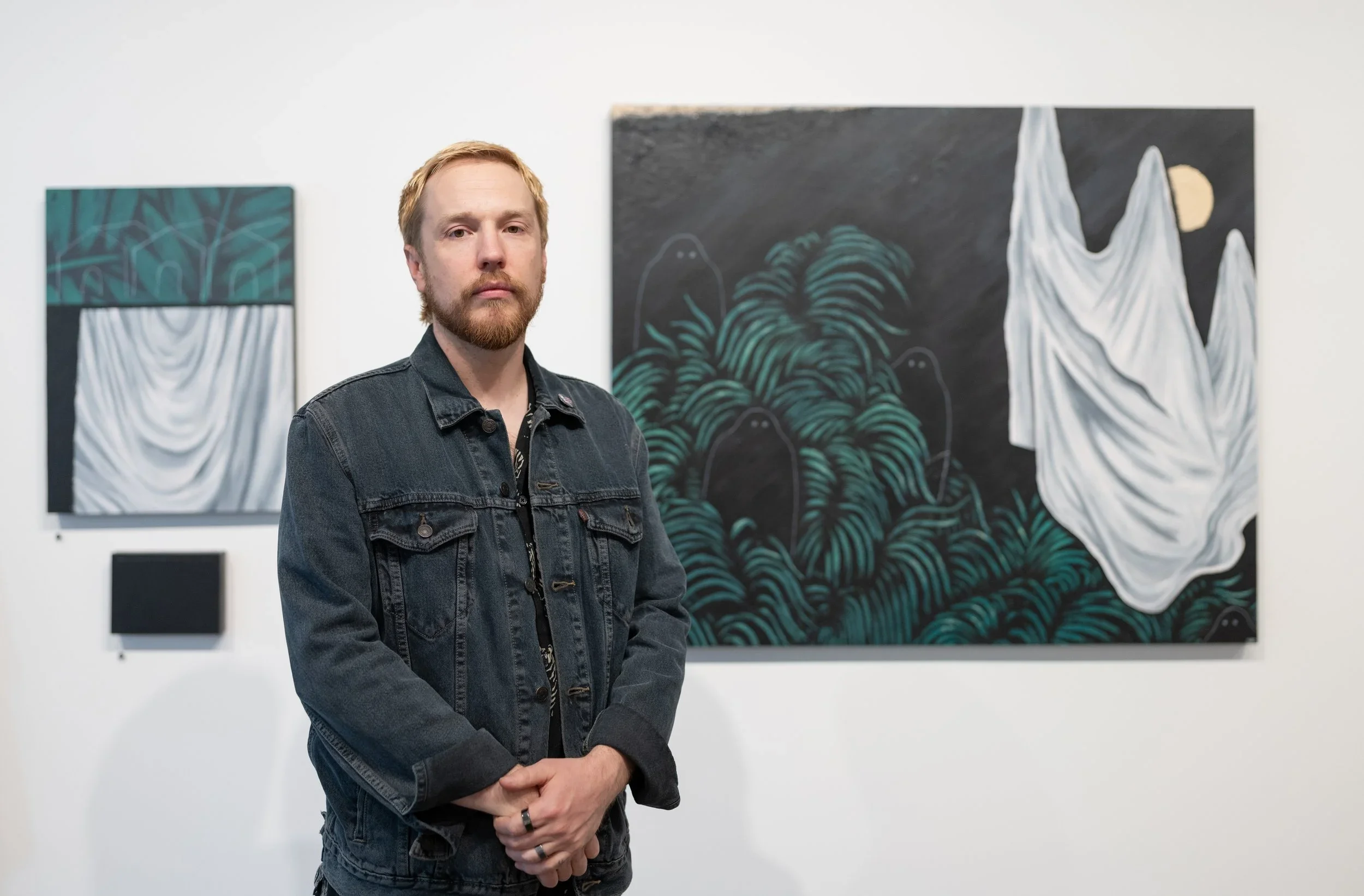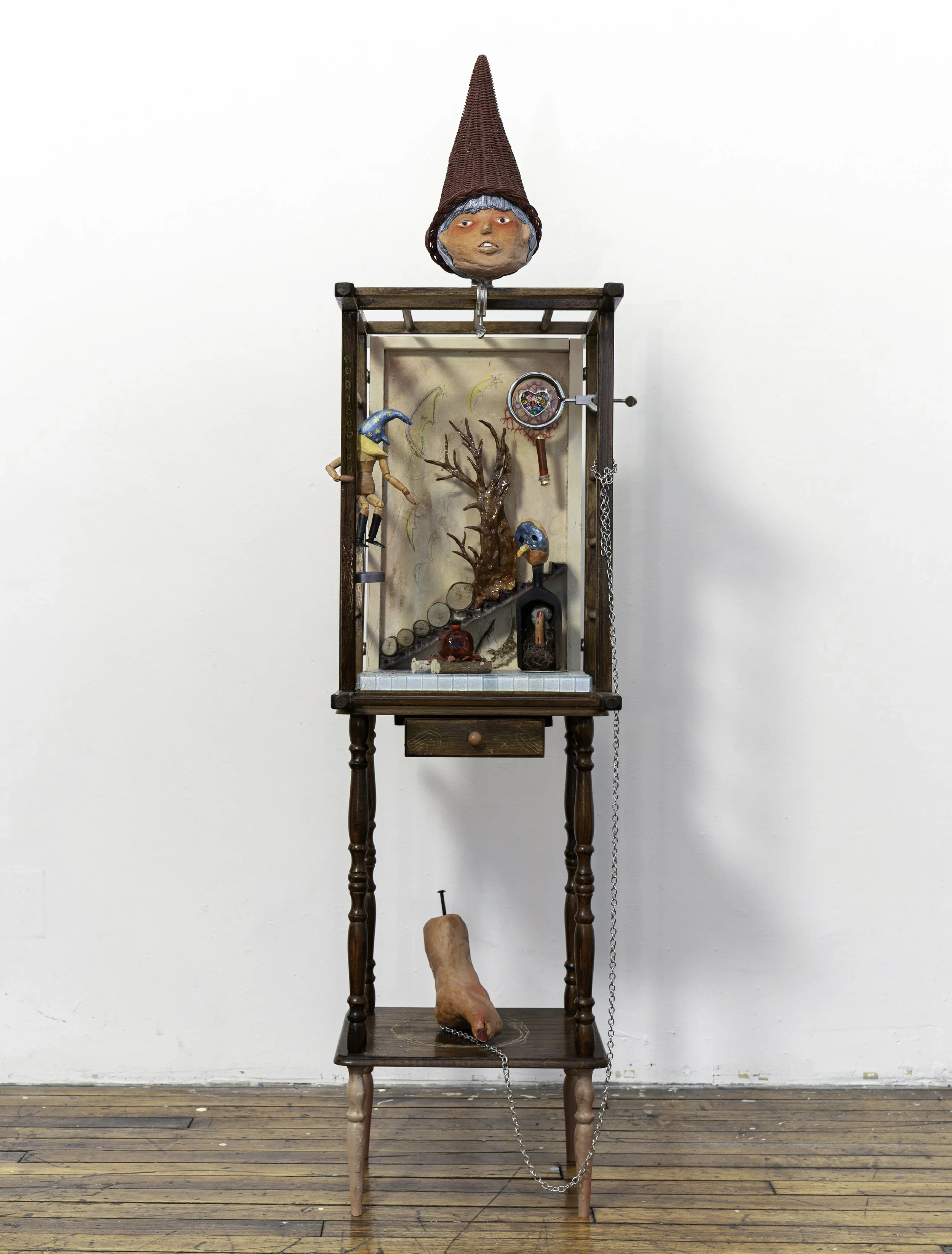10 Questions with Anna M. Masiul Gozdecka
Al-Tiba9 Art Magazine ISSUE18 | Featured Artist
Anna M. Masiul Gozdecka received her master’s degree in art from the Faculty of Painting of the Academy of Arts in Warsaw in the year 2000. She creates abstract and realistic compositions, sometimes full of colour and optimism, sometimes in grayscale with an accent, to honour all colours at their noblest. Her work is inextricably linked with nature and its perfection - the multitude of forms, textures, connections, the diversity of the landscape and the game light and shadow.
Anna M. Masiul Gozdecka - Portrait
She is constantly experimenting, reaching for various techniques: oil on canvas in painting people and faces, acrylic on canvas in abstraction, ink, acrylic and spray on paper, and she also creates collages. Her works are in private and corporate collections around the world: in Poland, Germany, France, Austria, Italy, Great Britain (private collections and corporate collection, for Ujima Housing Group), United States, Australia, Hong Kong, Singapore, Japan (private and corporate collection, created by Singulart.com) and Taiwan. She lives and creates in Poland.
Księżyc (Moon), Acrylics on canvas, 100x80 cm, 2024 © Anna M. Masiul Gozdecka
AL-TIBA9 ART MAGAZINE ISSUE18
INTERVIEW
You have an academic background in painting from the Academy of Fine Arts in Warsaw. How has formal training influenced your artistic evolution?
My time in the Academy was special—it was a period when I could fully dedicate myself to painting, which, in hindsight, was an incredible gift. My studies took place during the transformation of a communist country into a capitalist one, yet education still remained rooted in communism. A natural response for a young person in a rigid educational system is rebellion. One manifestation of this rebellion for me was my love for colour and flowers. However, artists, being sensitive individuals, do not always cope well with being forced into pre-approved forms dictated by professors. This is why, after obtaining my degree, I took a five-year break from painting.
University not only discouraged me from painting but also did not prepare me for navigating the art market. When I returned to my passion after those five years, it felt like starting from scratch — with watercolour, which I had never studied before. It completely drew me back into the world of painting. Since then, my passion has been discovering new techniques and possibilities. In a way, my artistic development has evolved in opposition to my formal education.
Na wschód od słońca (East from the Sun), acrylics on canvas, 100x100 cm, 2024 © Anna M. Masiul Gozdecka
Your work spans both abstraction and realism—from intimate portraits to large-scale compositions. How do you decide which approach to take for a particular piece? And how does scale impact the way you approach a piece?
For me, abstraction is like solving an equation with all unknown variables. It cannot be done through logic alone, so intuition plays a huge role. I need to be in a specific mental space to create abstract work. That is more important to me than the scale, although switching between large and small formats is refreshing and generates new ideas.
When I am in an abstract phase, I dislike being interrupted, as it pulls me out of my unique trance and way of thinking. I feel like I am just beginning to develop in this field now that my children are grown, allowing me the time to truly focus.Abstract works come in phases—I create many at once—which is why acrylic is the perfect medium for them.
When I finish an abstract cycle, I am usually very tired and, in theory, should take a break to refresh my mind. But since I love painting, I switch to portraits. They are "ready-made" in a sense because I know exactly what to paint step by step, making portrait painting a meditative, calming process for me. I can spend hours in front of the easel painting portraits,while my abstracts are always painted on the floor.
You have a dynamic and exploratory approach to materials and techniques. Do you have a favourite format, or do you prefer constantly shifting between them?
I like square formats because they allow for flexibility, and I don't mind if a buyer decides to change the orientation of a painting—that is inspiring to me. Every new element is a source of inspiration, which is why I love working with acrylics. This medium offers so many possibilities, from adding paper and textures to varying paint densities, using stencils, and experimenting with different tools. The potential for experimentation is limitless.
I also enjoy exploring different formats, though I am somewhat restricted by the size of my car when transporting paintings. Oil paint, on the other hand, is wonderful for portraits. I love the slow discovery of subtle shades, the meditative waiting for layers to dry, and the magical moment of varnishing when the full spectrum of colours finally comes to life.
Przeplatające się światy 1 (Intertwinning words 1), acrylics on canvas, 100x100 cm, 2024 © Anna M. Masiul Gozdecka
Na wschód od słońca (East from the Sun), acrylics on canvas, 100x100 cm, 2024 © Anna M. Masiul Gozdecka
Nature plays a central role in your art. What aspects of the natural world inspire you the most, and how do you translate them onto the canvas?
I have always loved spending time in nature, so as soon as I could, I moved out of the city. I am a passionate gardener, growing both seasonal vegetables and a collection of exotic plants. I am fascinated by the vast array of colours, forms, textures, and patterns in flowers, leaves, and animals. It is almost overwhelming—there is so much inspiration that I haveto make choices.
I simplify and intertwine these elements with my own vision, creating another world: the world of painting. Often, this happens unintentionally—I immerse myself in observing flowers, and then their essence intuitively finds its way onto my canvas.
Your use of color varies from vibrant optimism to subdued grayscale compositions. What influences your choice of palette for each work?
Nature itself. I live in a temperate climate with distinct seasons, and as they change, so does the colour palette around me—and my mood along with it. Sometimes, I feel exhausted by an overabundance of colours. When winter arrives, I limit my palette and find rest and meditation in simplicity.
Interestingly, constraints often lead to greater creativity than unlimited possibilities. I have been exploring the beauty of minimalist compositions while still drawing from my maximalist works. Then, as the seasons shift again, so does my colour palette. At times, I even work against the seasons—for example, drawing inspiration from vibrant Christmas lights in winter or from the monochromatic heat of mid-summer.
Kielich (Calix), acrylics on canvas, 150x100 cm, 2024 © Anna M. Masiul Gozdecka
You experiment with various techniques and materials—from oil and acrylic to ink and spray paint. How does this versatility shape your creative process?
It constantly refreshes my perspective and fuels new ideas. I also incorporate many simple painting and graphic techniques used in children's workshops, which I conduct annually. I want to introduce kids to a wide range of artistic possibilities, but they often give something back to me in return.
Every new experiment, every "mistake," becomes an opportunity. I used to feel conflicted about the fact that I was alwayschanging my approach and never settling into a single style. But one day, a curator displayed my diverse works together in a single exhibition space, and I saw that they actually had a lot in common. That was a breakthrough for me—I stopped worrying and simply followed my intuition. Over time, everything naturally comes together, even if I don't see the fullpicture yet, but my intuition does.
Ultimately, what messages would you like to convey with your work? What do you wish to communicate to viewers?
I want to convey a sense of wonder—both for the visible world and the invisible one, whether seen under a microscope or through the lens of imagination. I consider my work to be highly positive, energetic, and peaceful, despite the fact that my life has not always been easy.
I struggle with depression, and I could choose to express that in my art, but instead, I focus on what lies beyond it—on victory. My paintings are, in a way, a triumph, because depression is not creative.
Your work is in private and corporate collections worldwide. How do you think audiences from different cultures perceive your art?
I find this incredibly fascinating. Often, I don't have direct contact with buyers when my paintings are sold through galleries, but I am intrigued by their choices.
For instance, an abstract "Martian" landscape was purchased by someone in Australia because it reminded them of their local scenery. A realistic lake scene from Poland was acquired by a collector in Japan. It fascinates me that people, despite cultural differences, are drawn to something that feels familiar to them—even when it comes from a completely different part of the world.
Oranżeria (Orangerie), acrylics on canvas, 110x130 cm, 2024 © Anna M. Masiul Gozdecka
Dziwny Ogród 1 (Strange Gardens 1), acrylics on canvas, 130x110 cm, 2025 © Anna M. Masiul Gozdecka
Looking ahead, is there anything else you would like to experiment with? Any new medium, technique, or theme you would like to incorporate into your practice?
Nature is an infinite source of inspiration, so I will certainly continue exploring it—but perhaps in a different way. I often embrace randomness and mistakes or even provoke them to achieve unexpected results. So yes, I plan to experiment, though I don't yet know what.
I also love browsing art supply stores in search of new materials, as well as hardware stores, where innovative tools appear even more frequently. Even kitchen stores can be a treasure trove of unconventional painting tools. It excites me to look at an object and wonder how I can use it in a completely unexpected way. As for new themes, I remain open to whatever the universe whispers to me.
What are you currently working on? Are there any new projects or series on the horizon?
Right now, I am working on a series called "Strange Gardens." I always struggled with the fact that my abstractions weren't "garden-like" enough, while my realistic garden paintings never felt quite right. But these abstract gardens, which I recently began creating almost accidentally, finally have that elusive something my intuition has been guiding me toward.
This will definitely be my main focus for the near future—and after that? Who knows? The most exciting part is what's just around the corner and then the next turn after that.
Artist’s Talk
Al-Tiba9 Interviews is a promotional platform for artists to articulate their vision and engage them with our diverse readership through a published art dialogue. The artists are interviewed by Mohamed Benhadj, the founder & curator of Al-Tiba9, to highlight their artistic careers and introduce them to the international contemporary art scene across our vast network of museums, galleries, art professionals, art dealers, collectors, and art lovers across the globe.


























